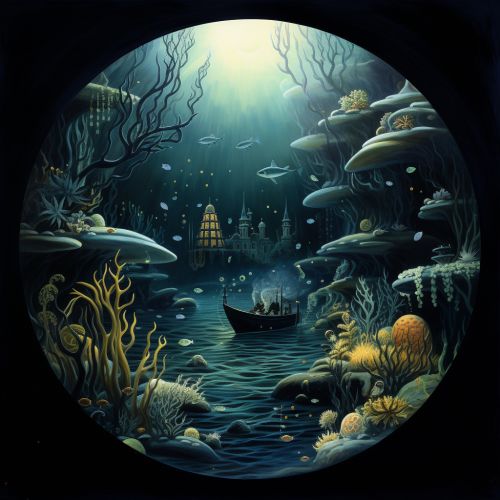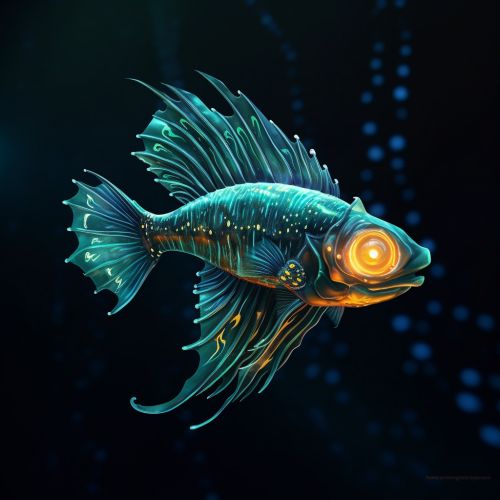The Biological Mechanisms of Animal Adaptation to Life in the Deep Sea
Introduction
The deep sea, defined as the area of the ocean below 200 meters, is a unique environment that presents a myriad of challenges to the organisms that inhabit it. These challenges include extreme pressure, low temperatures, and complete darkness, among others. Despite these inhospitable conditions, a diverse range of organisms have adapted to life in the deep sea through a variety of biological mechanisms. This article will explore these mechanisms, focusing on the physiological, morphological, and behavioral adaptations that enable deep-sea organisms to survive and thrive in this extreme environment.


Physiological Adaptations
Pressure Resistance
One of the most significant challenges faced by deep-sea organisms is the extreme pressure. At depths greater than 200 meters, the pressure increases by approximately 1 atmosphere for every 10 meters of depth. This means that organisms living at these depths must withstand pressures hundreds to thousands of times greater than at sea level. To cope with this, deep-sea organisms have developed pressure-resistant enzymes and cellular structures. For example, the proteins in these organisms are often more flexible and have a higher proportion of small, polar amino acids, which allow them to maintain their function under high pressure.
Temperature Regulation
The deep sea is characterized by low temperatures, often hovering around 2 to 4 degrees Celsius. To survive in these cold conditions, deep-sea organisms have developed various mechanisms for temperature regulation. These include the production of antifreeze proteins, which prevent ice formation in the organism's body, and the use of unsaturated fatty acids in cell membranes, which maintain their fluidity at low temperatures.
Metabolic Adaptations
Due to the scarcity of food in the deep sea, organisms have adapted to have slow metabolic rates. This allows them to survive long periods without food. Some organisms, like the giant tube worm, have even developed symbiotic relationships with chemosynthetic bacteria, which provide them with nutrients in the absence of sunlight.


Morphological Adaptations
Body Size and Shape
Deep-sea organisms often exhibit unique body sizes and shapes that are adaptations to the extreme conditions of their environment. For example, many deep-sea fish are small and elongated, a shape that reduces the energy required for swimming. Other organisms, like the giant squid, have evolved to be much larger than their shallow-water counterparts, a phenomenon known as deep-sea gigantism.
Bioluminescence
In the pitch-black environment of the deep sea, many organisms have developed the ability to produce light, a phenomenon known as bioluminescence. This light is often used for communication, attracting prey, or deterring predators. The light is produced by a chemical reaction involving a light-emitting molecule and an enzyme, known as a luciferin and a luciferase, respectively.
Sensory Adaptations
In the absence of light, deep-sea organisms have developed enhanced sensory systems to navigate their environment and locate food. These include highly sensitive eyes that can detect the faintest light, and lateral line systems that can detect changes in water pressure and movement.


Behavioral Adaptations
Deep-sea organisms have also developed a range of behavioral adaptations to cope with their extreme environment. These include unique hunting strategies, such as the anglerfish's use of a bioluminescent lure to attract prey, and the gulper eel's ability to greatly expand its mouth to swallow prey whole.
Many deep-sea organisms also exhibit vertical migration, moving up to shallower waters at night to feed, and returning to the depths during the day to avoid predators. This behavior is known as diel vertical migration and is one of the largest daily migrations of biomass on the planet.


Conclusion
The deep sea is one of the most extreme environments on Earth, yet a diverse range of organisms have adapted to life in this challenging habitat. Through a combination of physiological, morphological, and behavioral adaptations, these organisms have evolved to withstand extreme pressure, low temperatures, and complete darkness. Despite these harsh conditions, the deep sea is home to a rich biodiversity, demonstrating the remarkable resilience and adaptability of life on Earth.
